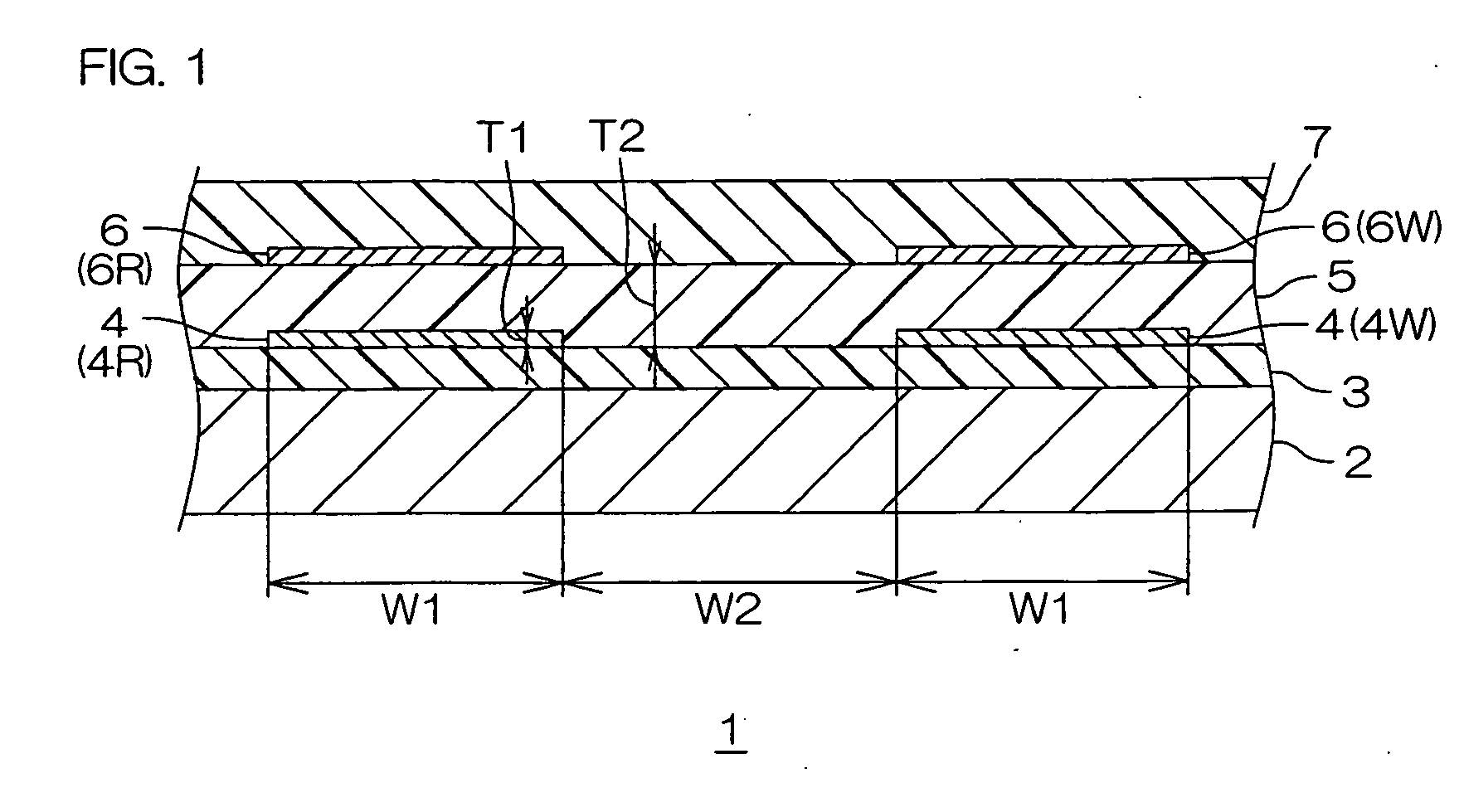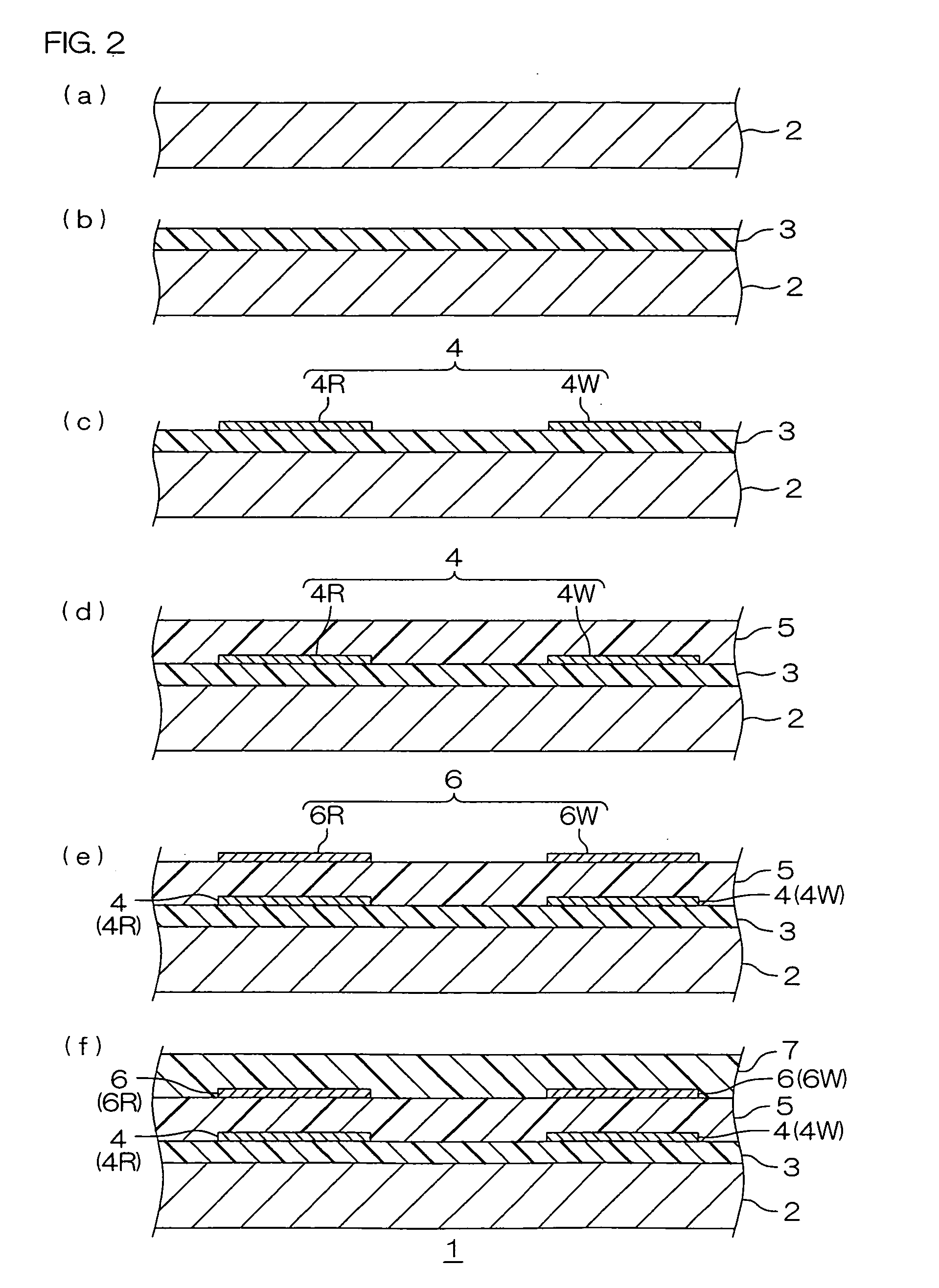Wired circuit board
a wired circuit board and circuit board technology, applied in the direction of printed circuit non-printed electric components association, integrated arm assembly, instruments, etc., can solve the problems of uneven suspension of discs, failure to achieve a thinner shape, and misalignment of the upper-side conductor
- Summary
- Abstract
- Description
- Claims
- Application Information
AI Technical Summary
Benefits of technology
Problems solved by technology
Method used
Image
Examples
example 1
[0113]First, a metal supporting board made of a 25 μm-thick stainless steel (SUS304) foil was prepared (cf. FIG. 2(a)). A varnish of a photosensitive polyamic acid resin was then applied to the entire upper surface of the metal supporting board and then dried. Thereafter, the dried varnish was exposed to light and developed, and the obtained product was further heated to be cured, so that a 10 μm-thick insulating base layer made of polyimide was formed (cf. FIG. 2(b)).
[0114]Subsequently, first wires and first terminal portions were formed on the insulating base layer by the subtractive method (cf. FIG. 2(c)).
[0115]In the subtractive method, first, a 0.1 μm-thick first conductive layer made of copper was formed over the entire upper surface of the insulating base layer by the sputtering method (cf. FIG. 3(a)).
[0116]Then, a dry film photoresist was laminated over the entire surface of the first conductive layer. Thereafter, the laminated product was exposed to light and developed, so ...
example 2
[0130]The suspension board with circuit was obtained in the same manner as in Example 1 except that the thickness of the first wire and that of the second wire were changed to 1 μm.
example 3
[0131]The suspension board with circuit was obtained in the same manner as in Example 1 except that the spacing between each of the first wires and the width of each of the first wires were changed to the same length, i.e., 25 μm, and the spacing between each of the second wires and the width of each of the second wires were changed to the same length, i.e., 25 μm.
PUM
 Login to View More
Login to View More Abstract
Description
Claims
Application Information
 Login to View More
Login to View More - R&D
- Intellectual Property
- Life Sciences
- Materials
- Tech Scout
- Unparalleled Data Quality
- Higher Quality Content
- 60% Fewer Hallucinations
Browse by: Latest US Patents, China's latest patents, Technical Efficacy Thesaurus, Application Domain, Technology Topic, Popular Technical Reports.
© 2025 PatSnap. All rights reserved.Legal|Privacy policy|Modern Slavery Act Transparency Statement|Sitemap|About US| Contact US: help@patsnap.com



